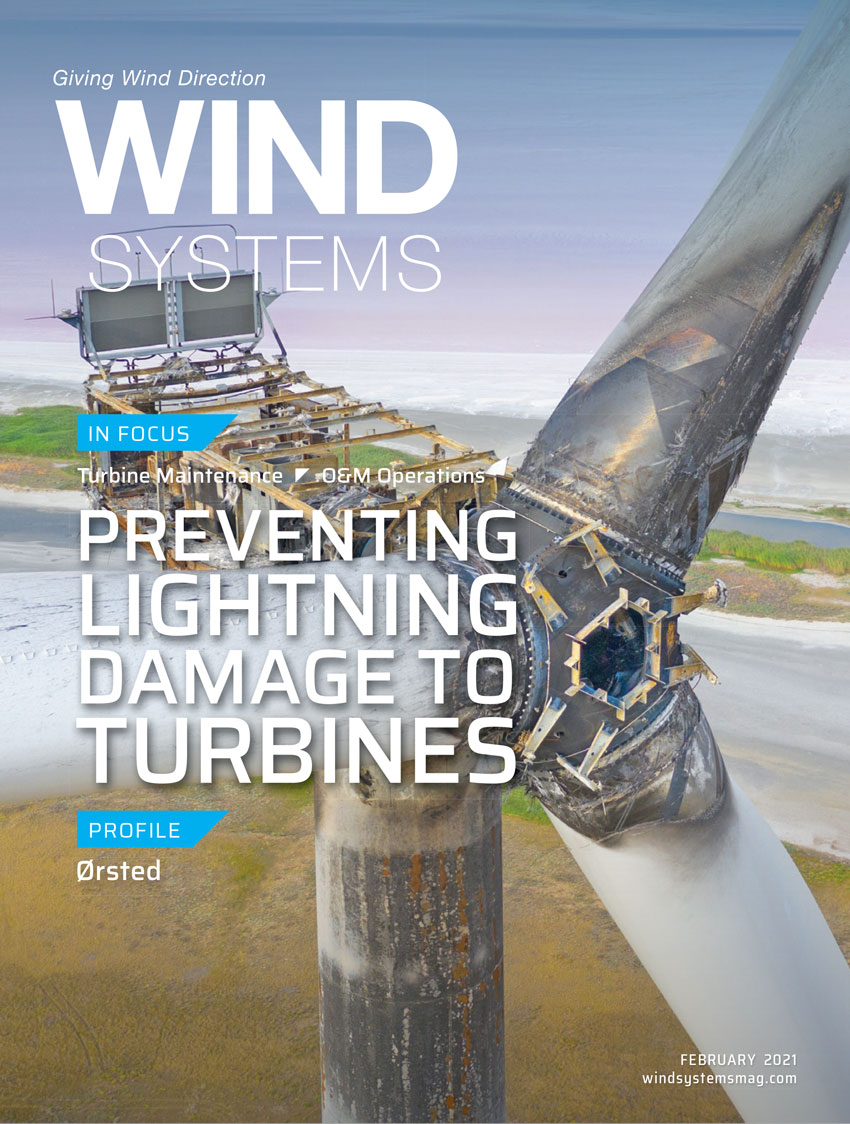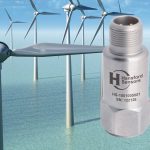A wind turbine’s gearbox, generator, and blades are the focus of intensive maintenance because (1) they’re subject to a lot of stress and wear and (2) they are costly parts to repair.
Although gearbox failure is relatively rare — once a decade on average — the downtime for a wind turbine while waiting for this part to be repaired can be almost half a year.
(According to a 2018 report by Deloitte Thomas, the average downtime of gearbox failure is 167 days as the delivery time of a new gearbox or gearbox parts is long.)
A typical 2.4-MW wind turbine generates about a $1,000 worth of electricity per day, so several months of downtime can be very costly in terms of lost revenue. Catastrophic gearbox failure, such as a fire due to overheating, is also a possibility. In that case, the wind turbine may be permanently out of commission.

Minimize Costly Downtime
Between up-tower visits for oil sampling and noise checks, the condition of wind turbines is typically monitored using a supervisory control and data acquisition (SCADA) system or a condition monitoring system (CMS). The SCADA or CMS device collects vibration and oil inline data from the wind turbine to help predict or detect faults in the blades, main bearings, and gearbox up to 30 days before a failure.
However, SCADA and CMS error information does not pinpoint the exact faulty part or specify the failure conditions. Furthermore, a 30-day warning in the case of gearbox failure could still leave the wind turbine out of commission for several weeks while waiting for parts. Supplementing a preventative maintenance strategy using a remote visual inspection (RVI) device to see inside the gearbox can give inspectors an earlier and more precise indication of the faulty component.
Internal Visual Inspection Supports Intelligent Decision-Making to Prevent Failures
With a nearly six-month delay in the delivery and replacement of certain gearbox components, the earlier inspectors can determine which part is needed, the shorter the downtime for the wind turbine. And knowing the potential failure conditions enables inspectors to make proactive and informed decisions about the parts’ purchase and maintenance plan. Periodic borescope or videoscope inspections during low wind season, for example, can help monitor any internal deterioration in the gearbox and possibly prevent equipment failures.
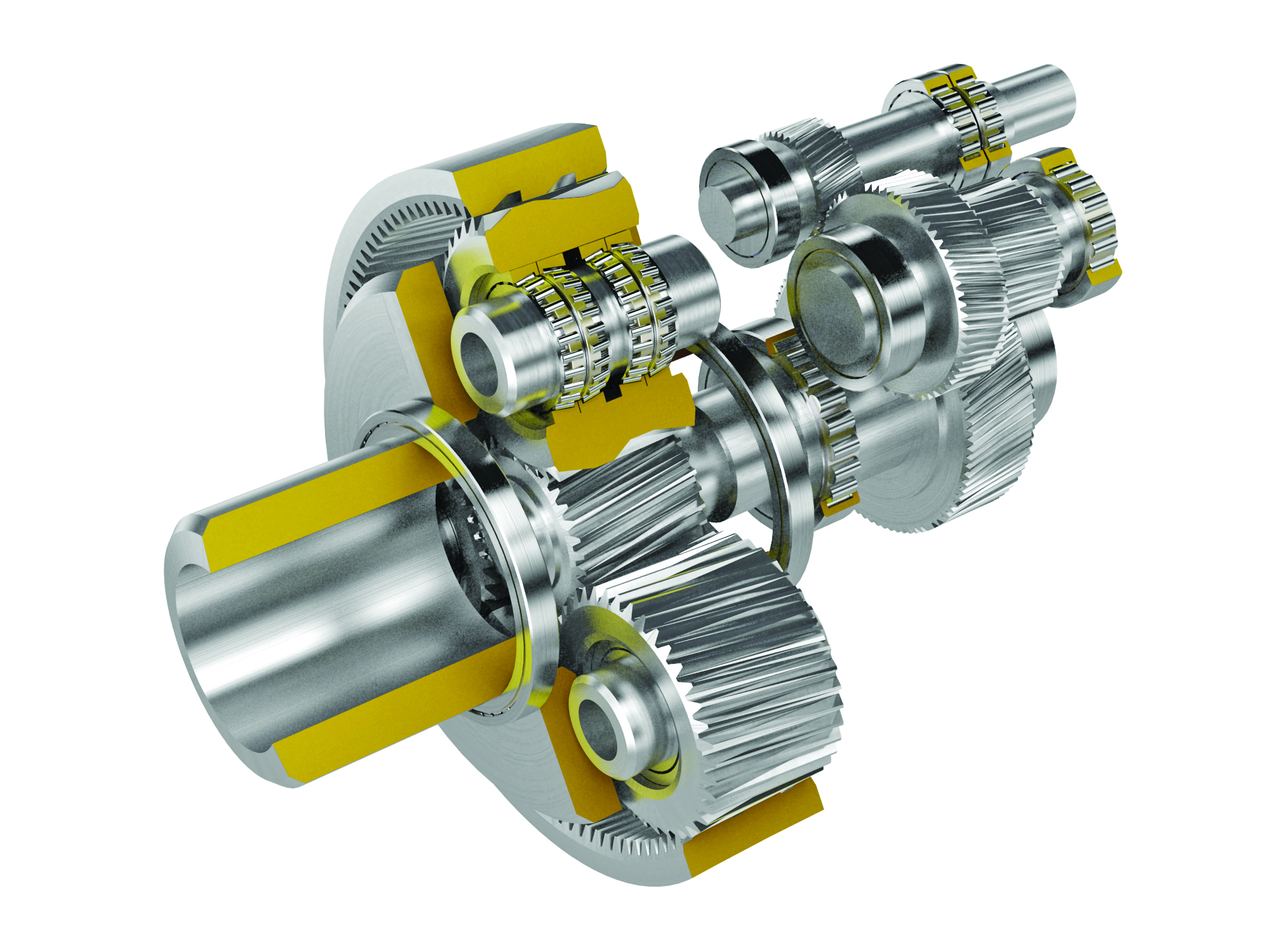
A Tip to Save Time in Wind-Turbine Inspection
Videoscopes offer intelligent illumination, maneuverability, and oil-resistance that help inspectors save time and improve the probability of detection of internal flaws in wind-turbine gearboxes. With the introduction of an oil clearing tip adaptor for the videoscope, inspections can continue without losing time in tip extraction and manual cleaning when the scope tip comes into contact with oil.
Inspecting inside the gearbox of a wind turbine is among the most time-consuming and difficult videoscope inspections. The combination of large size, dark conditions, reflective metallic surfaces, and the presence of oil all make detecting damage difficult for inspectors.
Wind-turbine gearboxes are particularly vulnerable to damage owing to their extreme operating conditions. High speeds and high stresses mean small defects can easily lead to gearbox failure or even to turbine fires. Measurement tools such as vibration sensors can monitor potential damage continuously, but only remote visual inspection (RVI) provides a thorough analysis of the state of a gearbox (Figure 1). So where does an inspector look when inspecting a gearbox?
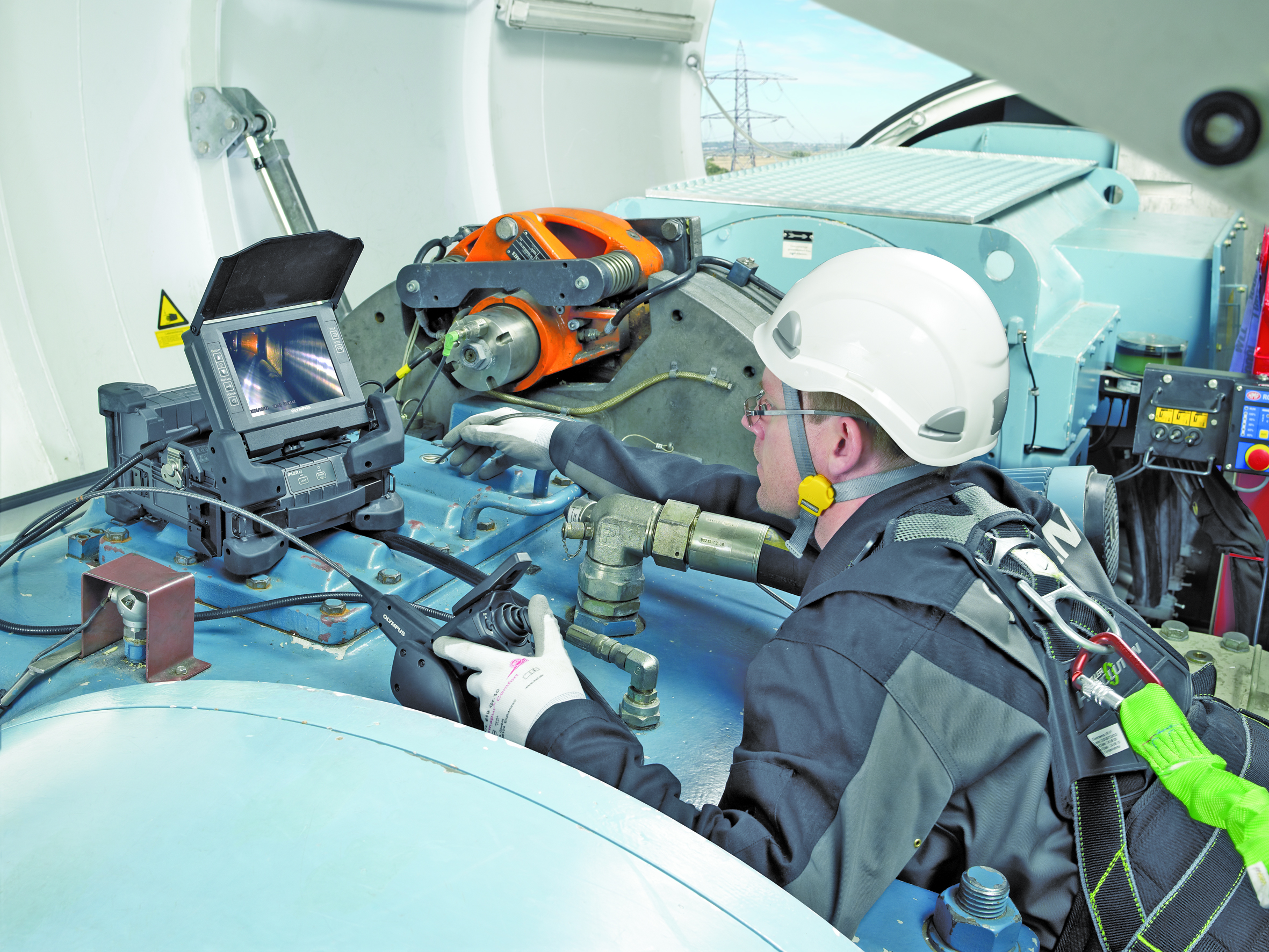
Inside a Wind-Turbine Gearbox
The function of the gearbox is to convert the slow rotation of the blades and the low speed shaft into a fast rotation to drive the generator. This process takes place in a series of transmissions (Figure 2). During an inspection, each transmission needs to be thoroughly examined, including the gear teeth and the bearings that support the shafts.
A typical wind-turbine gearbox contains three shafts: the low-speed shaft, the intermediary shaft, and the high-speed shaft. The low-speed shaft is directly driven by the blades and only rotates at a speed of between 20 and 30 revolutions per minute (RPM). However, in adverse weather conditions, the low-speed shaft needs to be able to absorb the extra stresses caused by strong winds. The high-speed shaft, on the other hand, is better protected against adverse weather but is still vulnerable between 1,500 and 1,800 RPM.
All three shafts are surrounded by stage bearings; these provide support to the different shafts by preventing lateral motion. Some of these bearings — the planetary stage bearings supporting the low-speed shaft, in particular — are in difficult-to-access locations from an inspector’s point of view.
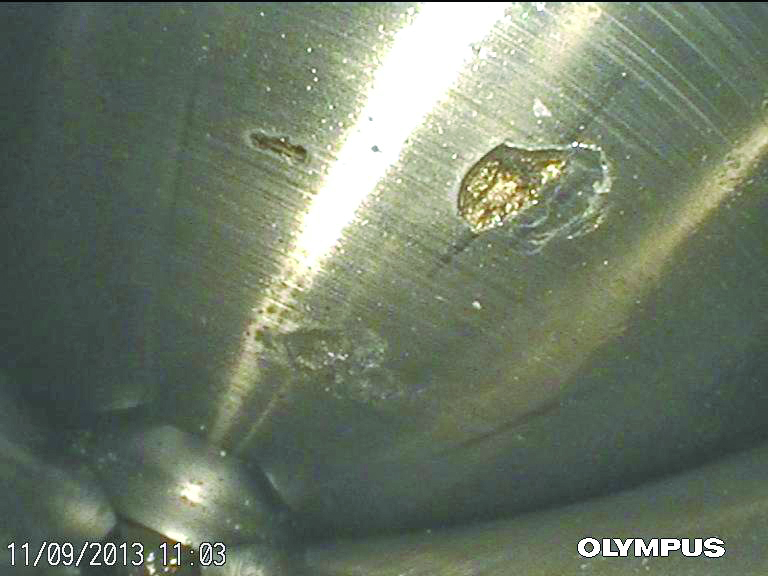
Create Sharp Images with the Oil Clearing Tip Adaptor
During operation, all gears and bearings are lubricated with oil. This means that during inspection the tip of the videoscope may come into contact with oil, which can lead to blurred images. When this happens, the inspector must retract the tip for cleaning and reinsert the scope tip into the gearbox and attempt to find its last location. As an alternative, the oil can be drained from the gearbox before the inspection begins, but this also adds to the overall inspection time.
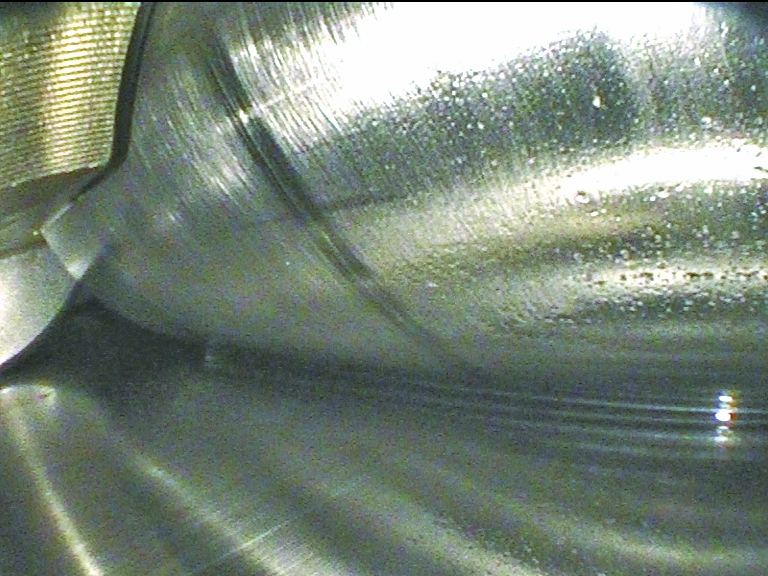
To save time for inspectors, a dedicated oil clearing tip adaptor for the videoscope will help eliminate the risk of blurred images, so oil on the scope tip is no longer a concern. The oil clearing capability works by using capillary action through grooves on the side of the tip adaptor. As a result, oil is drawn away from the lens without the need for tapping or cleaning while the scope tip is inside the gearbox.
Smart Illumination and Maneuverability
To reach every corner of the gearbox — and to take images that give reliable information about the state of the different components — videoscopes need to operate to the best of their capabilities. One important capability is illumination; the combination of large, dark spaces and highly reflective metallic surfaces poses a challenge when trying to produce images with the optimal brightness and contrast for reliable damage detection.
To address the issue of uneven brightness across the field of view of the camera, the image processing of the videoscope should automatically adjust the light intensity. The intelligent illumination processor provides light output on the conditions within the gearbox, which helps to produce clearer images with less noise and improve probability of detection (Figure 3).
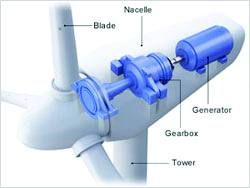
Another major obstacle for fast inspections of large systems, such as gearboxes, is poor maneuverability of the scope tip. During the inspection, the operator spends a significant amount of time maneuvering toward a target. This means flexible and fast articulation can reduce the time required to move the scope tip, so more time can be spent on visual inspection and capturing images.
Combining adaptive articulation with an intuitive interface on the videoscope will help improve the inspector’s hand-eye coordination. Good maneuverability and adaptive illumination make it easy to move through narrow openings without damaging the scope tip.
Summary
Videoscopes fitted with an oil clearing tip adaptor are well suited to deal with all the complicating factors of wind-turbine gearbox inspections: size, complexity, lighting conditions, narrow openings, and the presence of oil. However, the speed and precision of the inspection rely heavily on several key features of the videoscope, such as adaptive illumination, intuitive maneuverability, and oil resistance. The Olympus IPLEX RX videoscope is equipped with these features to save time and help to produce clearer images, thereby improving probability of detection and contributing to wind-turbine safety.
















